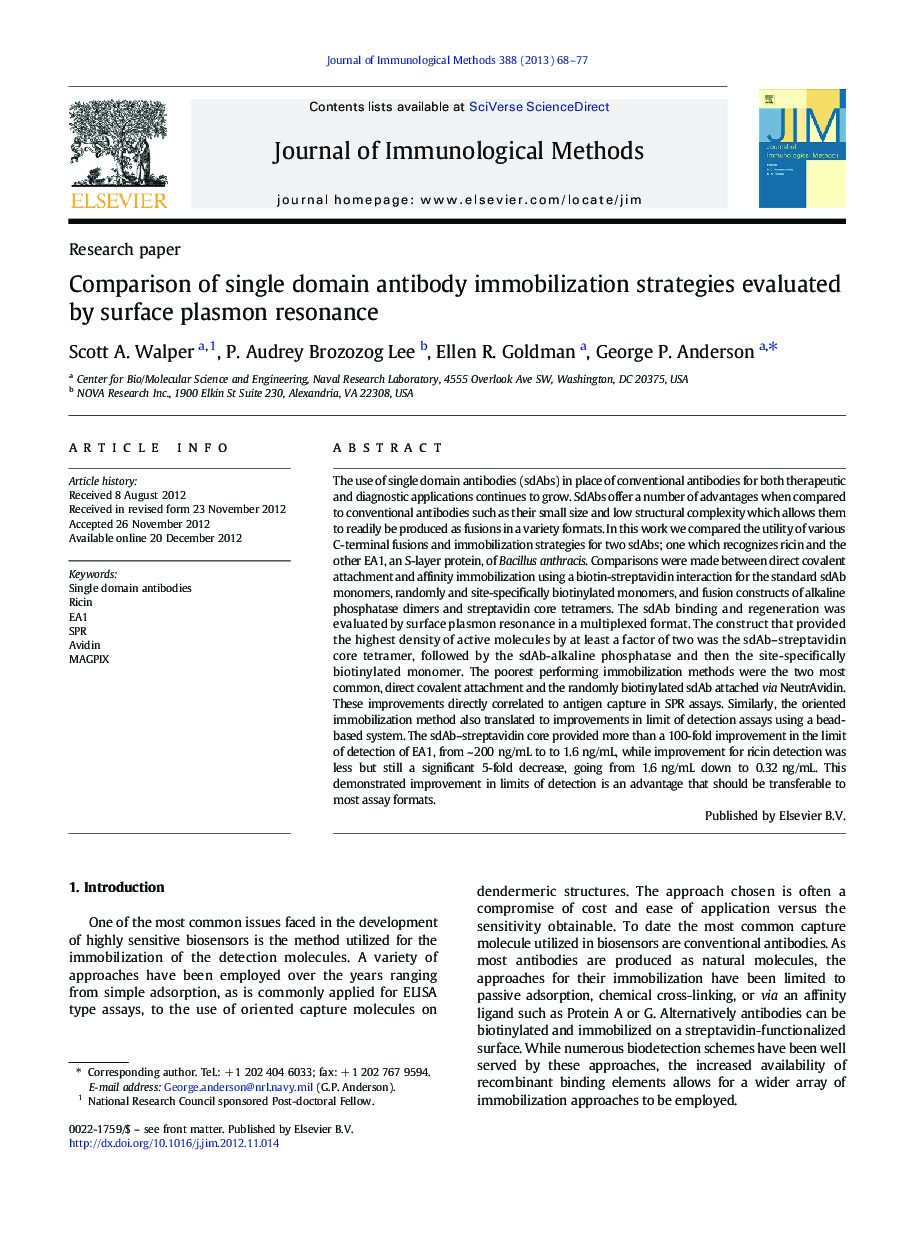| کد مقاله | کد نشریه | سال انتشار | مقاله انگلیسی | نسخه تمام متن |
|---|---|---|---|---|
| 2088345 | 1545719 | 2013 | 10 صفحه PDF | دانلود رایگان |

The use of single domain antibodies (sdAbs) in place of conventional antibodies for both therapeutic and diagnostic applications continues to grow. SdAbs offer a number of advantages when compared to conventional antibodies such as their small size and low structural complexity which allows them to readily be produced as fusions in a variety formats. In this work we compared the utility of various C-terminal fusions and immobilization strategies for two sdAbs; one which recognizes ricin and the other EA1, an S-layer protein, of Bacillus anthracis. Comparisons were made between direct covalent attachment and affinity immobilization using a biotin-streptavidin interaction for the standard sdAb monomers, randomly and site-specifically biotinylated monomers, and fusion constructs of alkaline phosphatase dimers and streptavidin core tetramers. The sdAb binding and regeneration was evaluated by surface plasmon resonance in a multiplexed format. The construct that provided the highest density of active molecules by at least a factor of two was the sdAb–streptavidin core tetramer, followed by the sdAb-alkaline phosphatase and then the site-specifically biotinylated monomer. The poorest performing immobilization methods were the two most common, direct covalent attachment and the randomly biotinylated sdAb attached via NeutrAvidin. These improvements directly correlated to antigen capture in SPR assays. Similarly, the oriented immobilization method also translated to improvements in limit of detection assays using a bead-based system. The sdAb–streptavidin core provided more than a 100-fold improvement in the limit of detection of EA1, from ~ 200 ng/mL to to 1.6 ng/mL, while improvement for ricin detection was less but still a significant 5-fold decrease, going from 1.6 ng/mL down to 0.32 ng/mL. This demonstrated improvement in limits of detection is an advantage that should be transferable to most assay formats.
► We evaluated activity of immobilized single domain antibody fusion constructs.
► Single domain antibody-streptavidin core fusions were superior capture reagents.
► Affinity immobilization improved surface density and antigen capture in SPR assays.
► Oriented antibodies greatly improved both signal acquired and limits of detection.
Journal: Journal of Immunological Methods - Volume 388, Issues 1–2, 28 February 2013, Pages 68–77